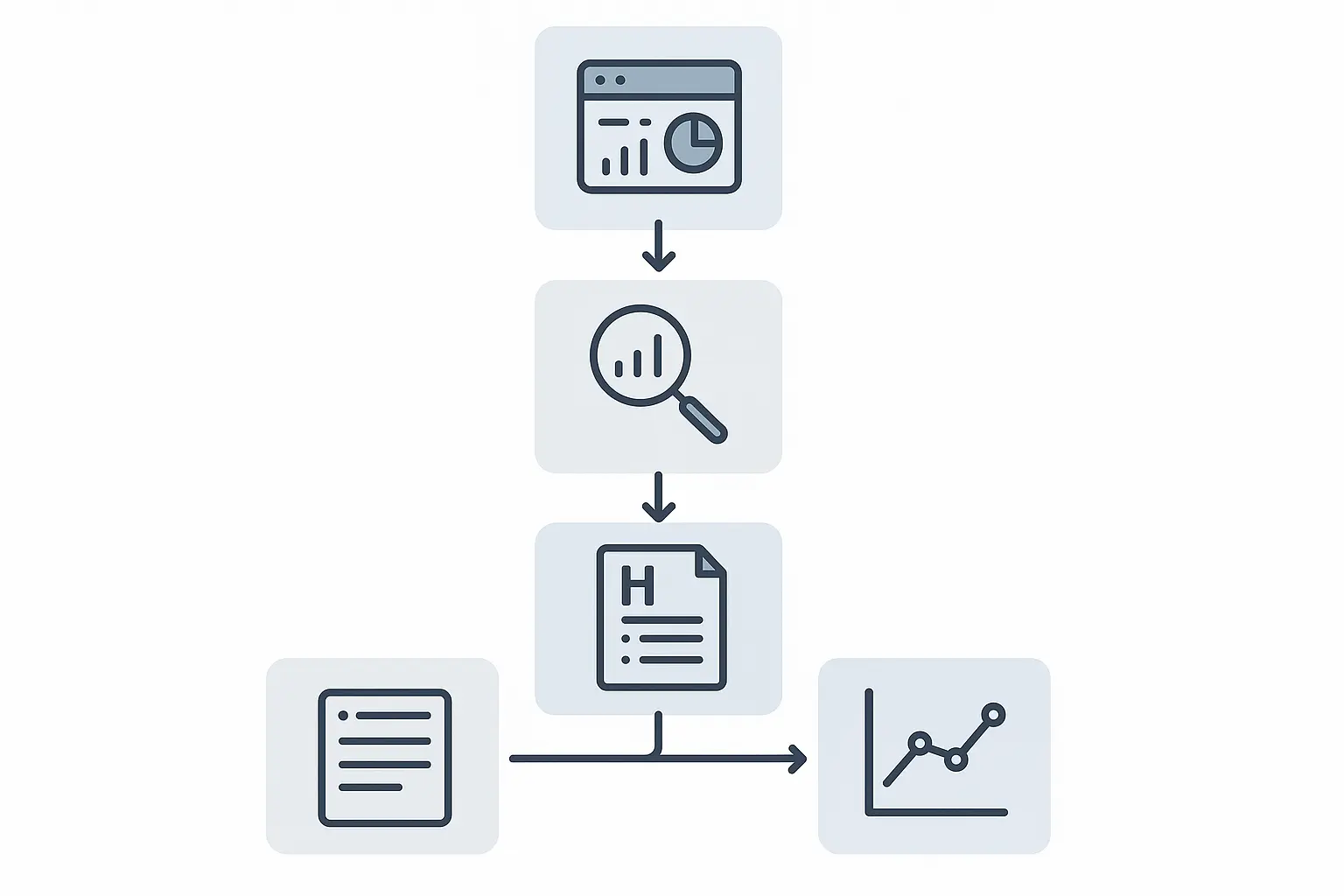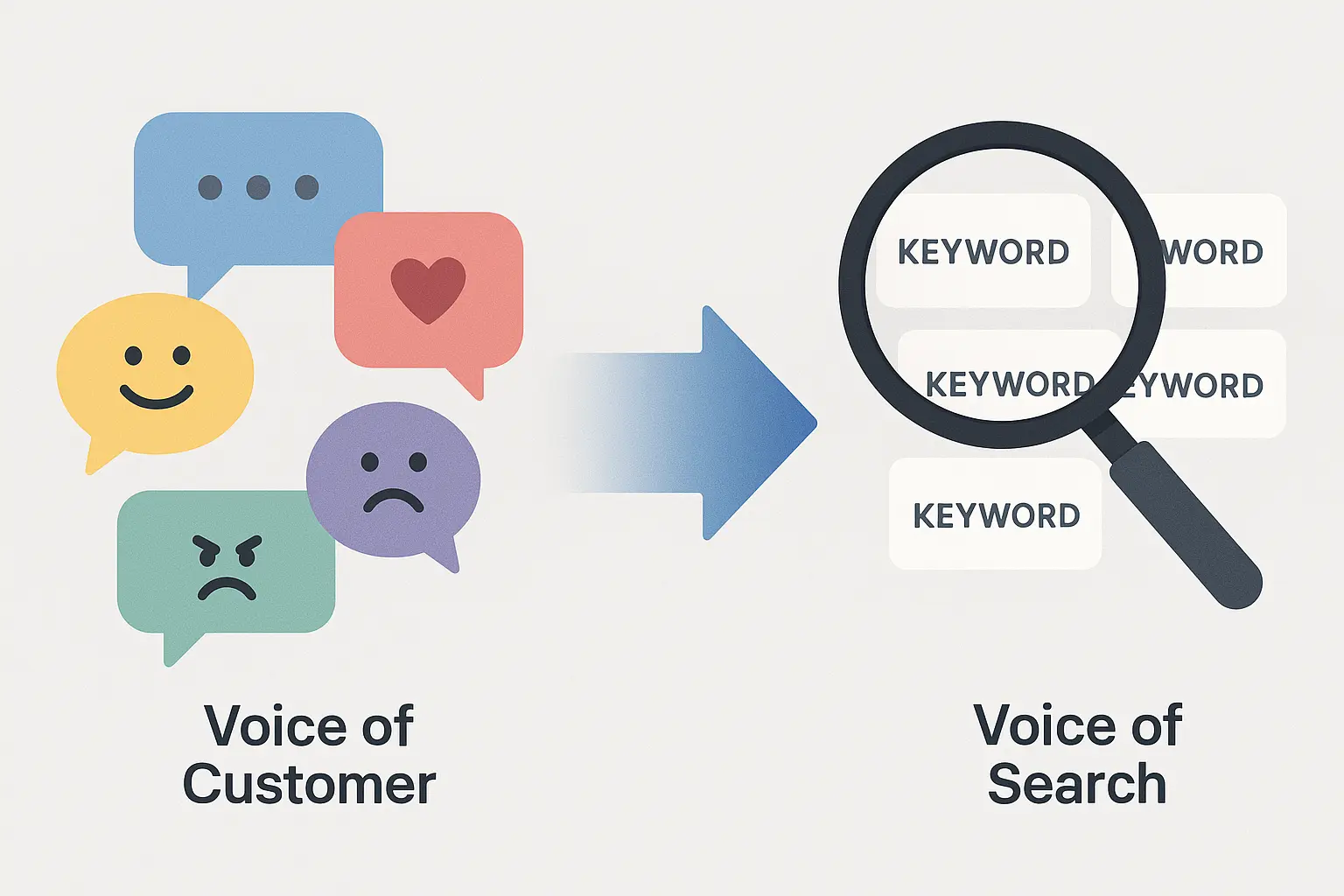Imagine this: Your team just spent two weeks creating a comprehensive blog post for a client, based on solid, traditional keyword research. The topic is “Top 10 Benefits of X.” It launches, and… crickets.
The piece is technically sound, but it doesn’t resonate. It feels like you’re talking at the audience, not with them.
Now, imagine a different scenario. Before writing a single word, you knew that your client’s customers were repeatedly asking on Twitter, “How do I integrate X with Z without causing system crashes?” You discovered a Reddit thread where dozens of users were complaining about a specific competitor’s confusing interface.
What if you could turn those raw, real-time conversations into a content brief that addresses those exact pain points? That’s not just better content. That’s proactive SEO.
The Problem with Playing Catch-Up
Traditional keyword research is fundamentally reactive. It’s based on historical data—what people have already searched for. While essential, it often misses the leading edge of a customer’s journey: their emerging questions, frustrations, and desires that haven’t yet been distilled into a simple Google query.
In today’s market, customers expect more. Research shows that 61% of consumers are more likely to buy from companies that deliver unique, custom content. They don’t want another generic listicle; they want answers to their highly specific problems.
By relying solely on reactive keyword data, agencies risk creating content that’s a step behind the conversation, always playing catch-up to audience needs.
From Reactive to Proactive: The Social Listening Shift
This is where social listening changes the game.
Think of social listening as digital eavesdropping for market research. It’s the process of monitoring social media channels, forums, and Q&A sites for mentions of your client’s brand, competitors, products, and industry keywords. Its true power isn’t in tracking mentions; it’s in understanding the context and intent behind the conversations.
Using this data to inform your SEO strategy shifts the focus from reacting to search trends to anticipating them. You can create content that answers questions before they become high-volume keywords, positioning your client as a true thought leader.
The 4-Step Framework: From Conversation to Content Brief
Transforming scattered social chatter into a structured, actionable SEO brief can seem daunting. Here’s a simple framework to guide you.
Step 1: Tune In to the Right Frequencies
First, you need to know where to listen. The goal is to cast a wide yet relevant net. Use a social listening tool (or even advanced searches on platforms) to monitor:
- Brand & Competitor Mentions: The obvious starting point. What are people saying about your client and their rivals?
- Industry Keywords & Pain Points: Go beyond brand names. Track phrases like “problem with [software type],” “how to choose [service],” or “alternative to [competitor].”
- Key Hashtags: Follow relevant industry hashtags on platforms like LinkedIn and Twitter.
- Community Hubs: Don’t forget forums like Reddit, Quora, and industry-specific groups where unfiltered conversations happen.
Step 2: Decode the Data and Find the Golden Nuggets
As you gather data, you’re not just looking for volume; you’re looking for patterns. Sift through the noise to identify actionable insights:
- Recurring Questions: “Does anyone know how to…?” or “What’s the best way to…?” These are future “how-to” articles and FAQ pages waiting to be written.
- Common Pain Points: “I’m so frustrated with…” or “The most annoying part is…” These are opportunities to create problem-solving content that builds immense trust.
- Competitor Complaints: “I switched from [Competitor] because…” This is a goldmine for creating comparison pages and content that highlights your client’s unique strengths.
- Praise & Feature Requests: “I love how [Product] does Y, but I wish it could also do Z.” This informs content about product updates, use cases, and future possibilities.
Step 3: Connect Social Insights to SEO Intent
This is the crucial step: bridging the gap between a casual social media comment and a strategic SEO objective. The goal is to translate the raw language of your audience into the structured language of search.
For example:
-
A tweet saying, “Ugh, setting up Brand X’s new analytics dashboard is a nightmare. The UI is so confusing!” becomes the foundation for an article targeting the keyword “how to set up Brand X analytics” with H2s like “Navigating the New User Interface” and “Common Setup Errors to Avoid.”
-
A Reddit thread titled “Is [Client’s Product] or [Competitor’s Product] better for small teams?” directly informs a comparison article targeting “[client] vs [competitor]” and validates the need for comprehensive reports that showcase performance data.
This process ensures your content isn’t just targeting a keyword; it’s addressing the real human frustration or curiosity behind it.
Step 4: Build the Proactive Content Brief
Now, assemble your findings into a comprehensive brief that empowers your content creators to produce truly relevant work. This brief goes far beyond a primary keyword and word count.
A proactive brief includes:
- Audience Insight: Start with a direct quote or summarized pain point from your social listening. For example: “Our target audience is struggling with the perceived high cost and complexity of switching to our software.”
- Core Question: The specific problem the content must solve.
- Primary & Secondary Keywords: Derived directly from the language used in social conversations.
- Proposed Headline & Meta Description: Crafted to resonate with the identified pain point.
- H2/H3 Outline: Use the recurring questions and sub-topics you discovered as a ready-made structure for the article.
- “Must-Include” Elements: List specific competitor features to address, common misconceptions to debunk, and user-generated examples to include. This is where you specify links to deeper resources, like a guide on how to perform a technical SEO audit.
Putting It All Together: A Quick Example
Let’s say your client sells eco-friendly shipping supplies for e-commerce businesses.
-
Social Listening: You find a LinkedIn discussion among small business owners. They’re not talking about “sustainability”; they’re complaining that “eco-friendly mailers always get damaged” and “the cost per unit is too high for my margins.”
-
Insight: The real pain point isn’t about being green; it’s about finding durable and affordable eco-friendly packaging.
-
Content Brief: Instead of a generic “Benefits of Sustainable Packaging” post, you create a brief for an article titled, “The Small Business Guide to Cost-Effective, Damage-Proof Eco-Packaging.”
Keywords: “durable eco mailers,” “affordable sustainable packaging,” “reduce shipping damage costs.”
Outline: Sections cover material strength comparisons, cost-breakdowns at different volumes, and tips for packing fragile items.
Internal Link: You make a note to link to the client’s product page that features their most durable mailer, reinforcing the solution. Your agency can track the performance of this content with an all-in-one SEO platform to prove its ROI.

The Agency Advantage: From Service Provider to Strategic Partner
Integrating social listening into your SEO process does more than just create better content. It transforms your agency’s value proposition.
-
You deliver hyper-relevant content: This content ranks better and converts more effectively because it speaks directly to the audience’s immediate needs.
-
You build undeniable authority for your clients: By anticipating trends, you position them as the go-to resource in their industry.
-
You have a data-backed rationale for your strategy: When a client asks why you’re targeting a specific topic, you can show them the exact conversations that inspired it. This builds immense trust. After all, 88% of consumers trust online reviews as much as personal recommendations—and social media conversations are the most authentic, real-time reviews you can find.
By closing the loop between social media and search, you demonstrate a sophisticated, omnichannel approach that sets your agency apart.
Frequently Asked Questions
What tools do I need for social listening?
For starters, you can use the advanced search functions on platforms like Twitter and Reddit. For more scalable efforts, tools like Brandwatch, Sprinklr, or even more accessible options like Brand24 and Awario can automate the process of tracking keywords across the web.
Isn’t this just for big brands with lots of mentions?
Not at all. In fact, it can be even more powerful for smaller brands. If a client has few direct mentions, you can focus your listening on industry-level pain points, competitor weaknesses, and broader conversational trends. This allows them to enter the conversation by providing solutions, not by talking about themselves.
How is this different from regular keyword research?
Think of it as a complementary intelligence layer. Keyword research tells you what people are searching for. Social listening tells you why they’re searching and what they’ll be searching for next. It adds a qualitative, forward-looking dimension to your quantitative keyword data.
How much time does this process take?
Initially, setting up your monitoring and learning to spot patterns requires an investment of time. However, once your process is established, it becomes a highly efficient way to generate a pipeline of proven content ideas. The key is turning it into a consistent habit rather than a one-off project.
Your Next Competitive Edge
The line between social media and search is blurring. Your audience doesn’t live in isolated channels, and your SEO strategy shouldn’t either. By tapping into the live, unfiltered voice of the customer on social media, you can craft a content strategy that’s not just optimized for algorithms, but for the people using them.
Start listening. Your clients’ future customers are already telling you exactly what they want to read.





